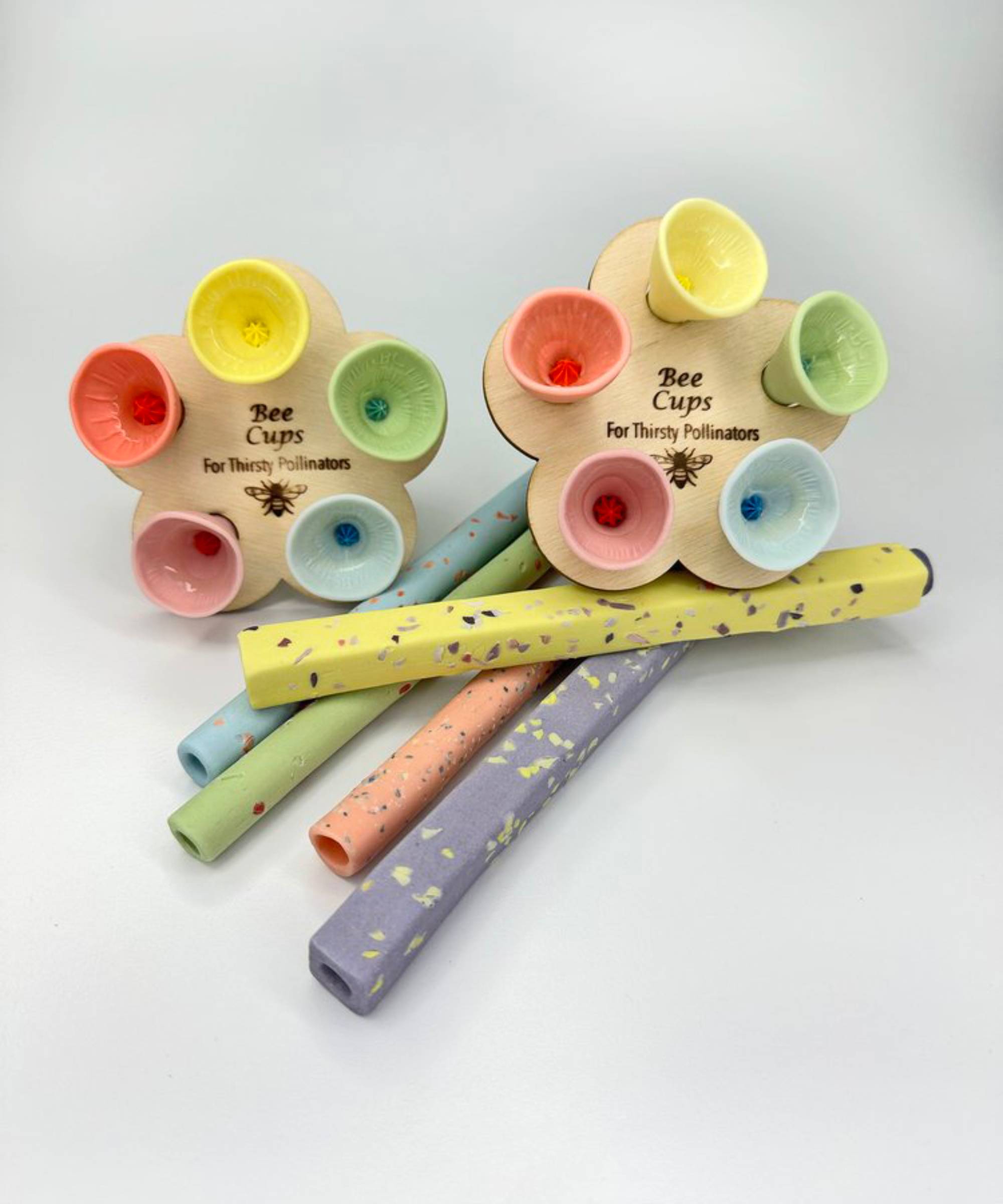Leaving Bee Hotels In Your Garden Can Help Pollinators – Here's How
Pollinator gardens don’t stop being important when the flowers stop blooming. Read on to learn about leaving behind bee hotels.

When a flowering pollinator garden is done blooming in the fall, many gardeners scramble to clean up the last of the plant detritus before freezing temperatures set in, not realizing that a lot of this plant refuse is actually valuable to many species of overwintering bees.
Honeybees overwinter in their hive, clustered around the queen, but other valuable bee pollinators don’t have a readymade place to call home during the winter months. Instead, they rely on hollow stemmed perennials and leaf clutter for use as a kind of bee hotel. These overwintering bees will emerge in the spring to pollinate your garden, so it’s important to leave something behind for them to shelter in.

The Queen Bee Bundle from Bee Cups comes with everything you need to create a pollinator paradise! Get 10 porcelain Bee Cups and 5 Bee Nurseries coated with an ultraviolet glaze bees can't resist.
Where Do Bees Go in the Winter?
As the colder temperatures of fall take over, the number of honeybees, bumble bees, and solitary bees begins to dwindle. What happens to them? As flowers die off in response to cool temps, the bees enter into a period called ‘winter diapause’ which refers to their overwintering behavior. In response to a lack of food sources, bees shelter from the weather to conserve energy until spring.
Bees use the winter months as a time for young to gestate, utilizing hollow stems or piercing stems. These overwintering bees may be either developing pupae or fully formed adults. This is the common scenario for solitary bees. With the exception of the queen, most bumble bees die off naturally, leaving a scant few to mate with the queen. Meanwhile, honeybees cluster together inside the hive to keep the queen warm and safe.
How You Can Help Save the Bees
One of the primary things you can do to save the bees is to create a butterfly garden. Butterfly gardens aren’t just for the Lepidoptera family -- they benefit any number of other pollinators from bees to birds as well. If you’d like to learn more about butterfly gardens, enroll in our Gardening Know How Learning Channel course.
Once you’ve enticed the bees into your garden, there are a number of things you can do to help save the bees overwinter. As already mentioned, many solitary bees overwinter in stems and leaf clutter. Instead of cutting perennials way back in the fall, consider leaving at least a foot (31 cm.) of the stalks behind for use as bee hotels.
If you wish to deadhead the blooms, cut them and then either put them in the compost pile or pile them up in another area for use by the bees. Remember, there may already be bees in various stages of development within these stems and twigs. These will be your valuable pollinators come spring, so it’s to your benefit to save them.
Gardening tips, videos, info and more delivered right to your inbox!
Sign up for the Gardening Know How newsletter today and receive a free copy of our e-book "How to Grow Delicious Tomatoes".
Also consider leaving the fall leaves where they land. Not only do they make terrific mulch, but they provide essential shelter for bumble bee queens, butterflies, and moth species. Leaf mulch will also attract other beneficial insects such as ladybugs, so leave the leaves where they fall.
Collect Bee Nests
Some perennials really just need to be pruned in the late fall to early winter. If you must cut back woody plants, check the stems for signs of cavity nesting bees like mason or carpenter bees.
Mason bee nests are easy to identify. They appear as holes neatly plugged with dead leaves or plant fibers and sealed with mud and/or resin. Carpenter bee nests are more difficult to spot as they do not seal the entrance like mason bees.
Once you have identified the nests, cut the stems 6 to 12 inches (15-31 cm.) from the nest entrance, and place them in a garage or other cool, dry area. When temps warm in the spring, bring the nests back out into the garden.
Bees may also make nests in bamboo stakes or wooden dowels used in the garden, so be sure to examine them for nest sites as well.
Check Logs and Firewood
Before you bring your firewood inside to burn, check it for nests. Many pollinators, like leafcutter bees and green sweat bees to name a couple, will use the abandoned burrows of wood boring beetles as nest sites.
Some caterpillars and several predatory beetles (lady, tiger, etc.) overwinter inside or under old logs as well. So, before you remove that old snag or have that years-old stump ground, check for nesting sites. If you can, refrain from grinding, removing, or burning stumps until the spring when the bees will emerge.
Preserve Your Pollinator Garden
Remember, in the fall, practice “lazy” gardening. This means leaving around a foot (30 cm) of stem on perennials as bee hotels, or cutting stems complete with bee nests and storing in a cool, dry area until spring.
Do you want to encourage bees and other pollinators -- including the endangered monarch butterfly -- to rest, raise young, and feed in your garden? Consider enrolling in our butterfly garden course to learn how.
Enroll In Heather's Butterfly Gardening Course Today
This article features products available from third party vendors on the Gardening Know How Shop. Keep in mind that our plant inventory is limited - so if you’re thinking of purchasing, don’t wait!

Heather Andrews is a published author, an astute photographer, and an avid expert gardener. She spends much of her time helping people create sustainable gardens as a way to attract wildlife, support pollinators and increase vegetable yield using native plants.